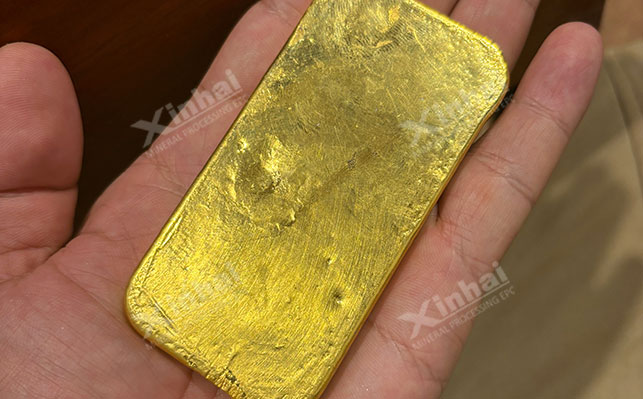
15311826613
Click to add WeChat
Refractory gold ore, also known as refractory gold ore or refractory metallurgical ore, refers to those gold ores that cannot achieve 80% gold recovery rate by conventional cyanidation method after fine grinding. There are many types of refractory gold ores, which can be divided into three types: sulfide gold ore, carbonaceous gold ore, and telluride gold ore. Among them, refractory sulfide gold ore generally refers to gold ore with high sulfur, copper and arsenic content and flotation concentrates in which gold and sulfide are closely coexisting. Since gold is sulfur-philic, it often coexists with metal sulfides. Therefore, sulfide-type refractory gold ore accounts for a large proportion of gold resources, and about 30% of the world's gold resources belong to refractory sulfide gold ore.
The basic characteristics of this type of gold ore are that gold is present in fine particles or microscopic and submicroscopic forms in carrier minerals such as pyrite and arsenopyrite, and is closely coexisting with the carrier minerals. It is difficult to dissociate it even by fine grinding. In direct cyanide leaching, since most of the gold is still wrapped by the carrier minerals, the leaching agent cyanide cannot penetrate into the solid and interact with the submicron-sized gold particles wrapped, so the leaching rate is very low.
For the above-mentioned minerals that cannot be cyanided for gold extraction after grinding, the elements on the mineral lattice nodes need to be converted from reduced state to oxidized state to destroy the sulfide ore lattice that wraps the gold, forcing the gold to be exposed from the carrier mineral, and then cyanidation gold extraction treatment is carried out. This method of oxidizing and decomposing the carrier gold mineral before cyanidation gold leaching to increase the degree of gold exposure is called oxidation pretreatment.
Traditional gold ore oxidation pretreatment methods include roasting oxidation method and pressurized oxidation method. Among them, the former will emit harmful gases during the roasting process, thereby polluting the environment on Friday; while the latter requires oxygen production equipment and acid-resistant autoclaves, which increases the investment cost of the entire infrastructure. In order to improve this unfavorable condition, after years of research and innovation, a microbial oxidation pretreatment method has been developed.
This pretreatment method uses certain microorganisms to directly or indirectly oxidize and decompose the sulfide ore matrix during metabolism or its metabolites to release the encapsulated gold. Unlike base metal microbial leaching, the pretreatment stage does not dissolve gold. It only destroys harmful components such as pyrite and arsenopyrite that encapsulate gold, exposing the gold and creating conditions for subsequent cyanide leaching of gold. Currently, the commonly used microbial pretreatment methods are stirred lees oxidation and heap oxidation.
Stirred lees oxidation: Mainly used for the pretreatment of gold concentrates produced by conventional flotation or raw ores with higher gold grades. The process includes: first, the concentrate or finely ground raw ore is adjusted to a pH value below 2.5 in the slurry mixing tank with H2SO4, and nutrient solution is injected; then the slurry that has been leached is transferred to the microbial leaching tank, microorganisms are inoculated, and the slurry in the slag is stirred and aerated for oxidation; then after the leaching is completed, the slurry is sent to the thickener. The concentrated slurry is sent for filtration. The filter cake is the final leaching product, which can be cyanided for gold extraction after alkalization.
Heap leaching oxidation: First, pile gold ore of appropriate particle size on the leaching field, spray it with acidic ferric sulfate solution containing thiobacillus ferrooxidans for several weeks to several months, then wash the ore pile with alkaline solution to make it alkaline, and finally spray it with dilute cyanide solution for gold leaching. This process is mostly suitable for the pretreatment of ores with lower gold grades.
Above, we introduced the characteristics of refractory gold and oxidation pretreatment, and also introduced the process of oxidation pretreatment. In actual concentrators, due to the different properties of refractory gold ores, the pretreatment methods used are also different. If you want to effectively improve the grade of gold concentrate, you can design a suitable gold pretreatment process and gold ore dressing process scheme through ore dressing test analysis.